- Integraciones
- Integración personalizada
- Gestionar tokens de API de usuario de servicio
Gestionar tokens de API de usuario de servicio
Aprenda a crear, revocar, eliminar y regenerar tokens de API de usuario de servicio para conectar sistemas externos de forma segura desde la aplicación web.What are the differences between service user and user API tokens?
Service user and user API tokens offer flexible ways to connect external tools to SafetyCulture.
Service user API tokens are best suited for long-term or shared integrations where access should stay the same regardless of user changes. You can set their permissions, which makes them ideal for stable, system-level connections.
User API tokens are suitable for one-off tasks, personal workflows, or scenarios where access needs to reflect a specific user's permissions or group and site memberships.
Choosing the correct token type ensures your integration runs smoothly while matching your organization's security and access needs.
Functionality | Service user API token | User API token |
|---|---|---|
Ownership | Created for a service user (system-based or integration-focused) | Created by an individual user |
Login | Cannot be used to log in | Can be used to log in |
Permissions | Assigned for each service user | Inherits the user’s permission set |
Group and site access control | Not supported | Inherits access from the user |
Integrations | Designed for long-term or shared integrations | Suited for short-term or personal use |
Token stability | Not affected by user changes | Will expire if user is deactivated or exits the organization |
Activity logs | Shows the service user name | Shows the individual user’s name |
Visibility | Not shown in the user list | Visible in user settings |
Billing | Does not count toward seat billing | Counts toward assigned user seat |
Cada usuario puede crear hasta 10 tokens de API de usuario activos. Por otra parte, cada organización puede tener hasta 20 tokens de usuario de servicio activos.
Si pertenece a varias organizaciones, debe crear tokens de API independientes para sus integraciones. Esto se aplica tanto a los tokens de API de usuario como a los de usuario de servicio.
Si está usando un token de API de usuario de servicio para el aprovisionamiento SCIM, el usuario de servicio debe tener tanto Permiso de "Administración de plataformas: Usuarios" como Permiso para "Administración de plataformas: Grupos".
Crear un token de API de usuario de servicio
Haga clic en el nombre de su organización en la esquina inferior izquierda de la página y seleccione Integraciones.
Seleccione Tokens de API de la pestaña en la parte superior de la página.
Haga clic en
Crear token de API en la parte superior derecha de la página.
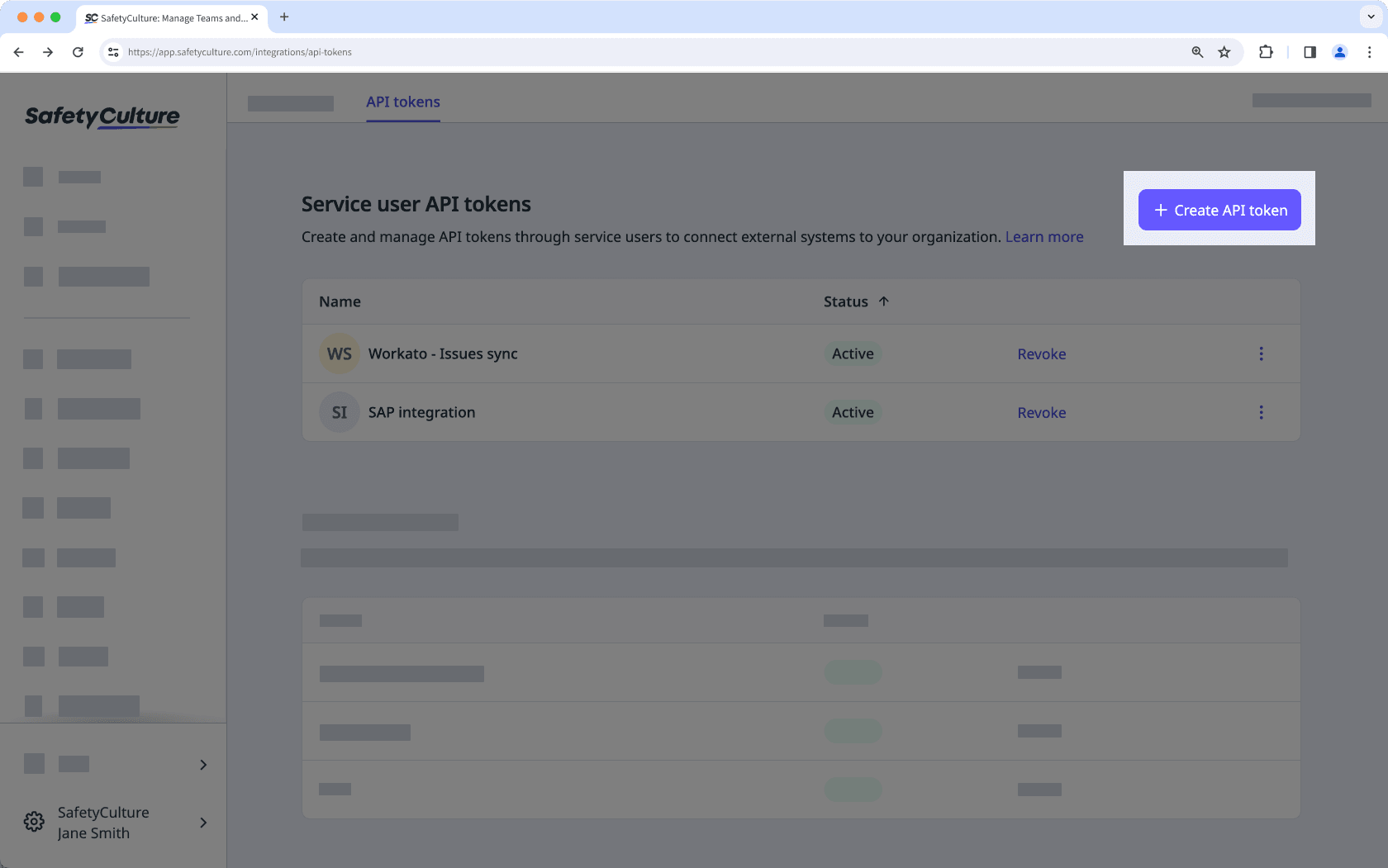
Complete los siguientes datos:
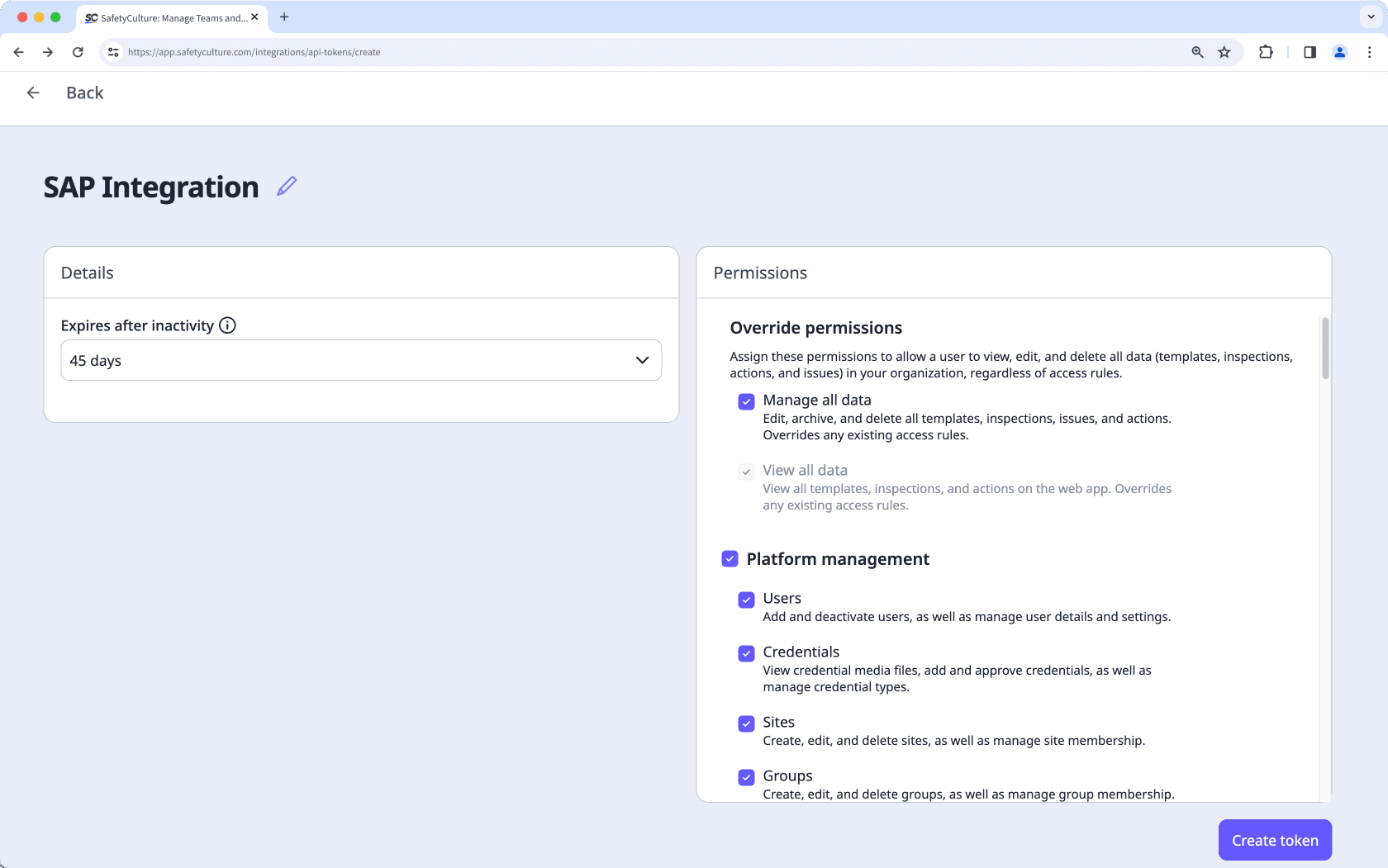
Escriba un nombre para el token de API de usuario de servicio que describa su propósito.
Elija cuánto tiempo permanecerá activo el token antes de caducar por inactividad. Puede seleccionar 31, 45 (valor predeterminado), 60 o 180 días.
Seleccione los conjuntos de permisos para el usuario de servicio. Todos los permisos están seleccionados de forma predeterminada.
Haga clic en Crear token en la parte inferior derecha de la página.
En la ventana emergente, haga clic en el token de API del usuario de servicio para copiarlo. Guárdelo de forma segura antes de cerrar la ventana.
Editar un token de API de usuario de servicio
Haga clic en el nombre de su organización en la esquina inferior izquierda de la página y seleccione Integraciones.
Seleccione Tokens de API de la pestaña en la parte superior de la página.
Haga clic en el token de API de usuario de servicio activo que desea editar.
Haga clic en
en la parte superior izquierda de la página para cambiar el nombre del token.
En el lateral izquierdo de la página, haga clic en Editar para definir cuánto tiempo permanecerá activo el token antes de que caduque por inactividad. Puede elegir entre 31, 45 (valor predeterminado), 60 o 180 días.
En el lateral derecho de la página, haga clic en Editar para actualizar los conjuntos de permisos del usuario de servicio.
Haga clic en Guardar cambios.
Ver la lista de tokens de API de usuario de servicio
Haga clic en el nombre de su organización en la esquina inferior izquierda de la página y seleccione Integraciones.
Seleccione Tokens de API de la pestaña en la parte superior de la página.
En Tokens de API para usuario de servicio, vea la lista de tokens.
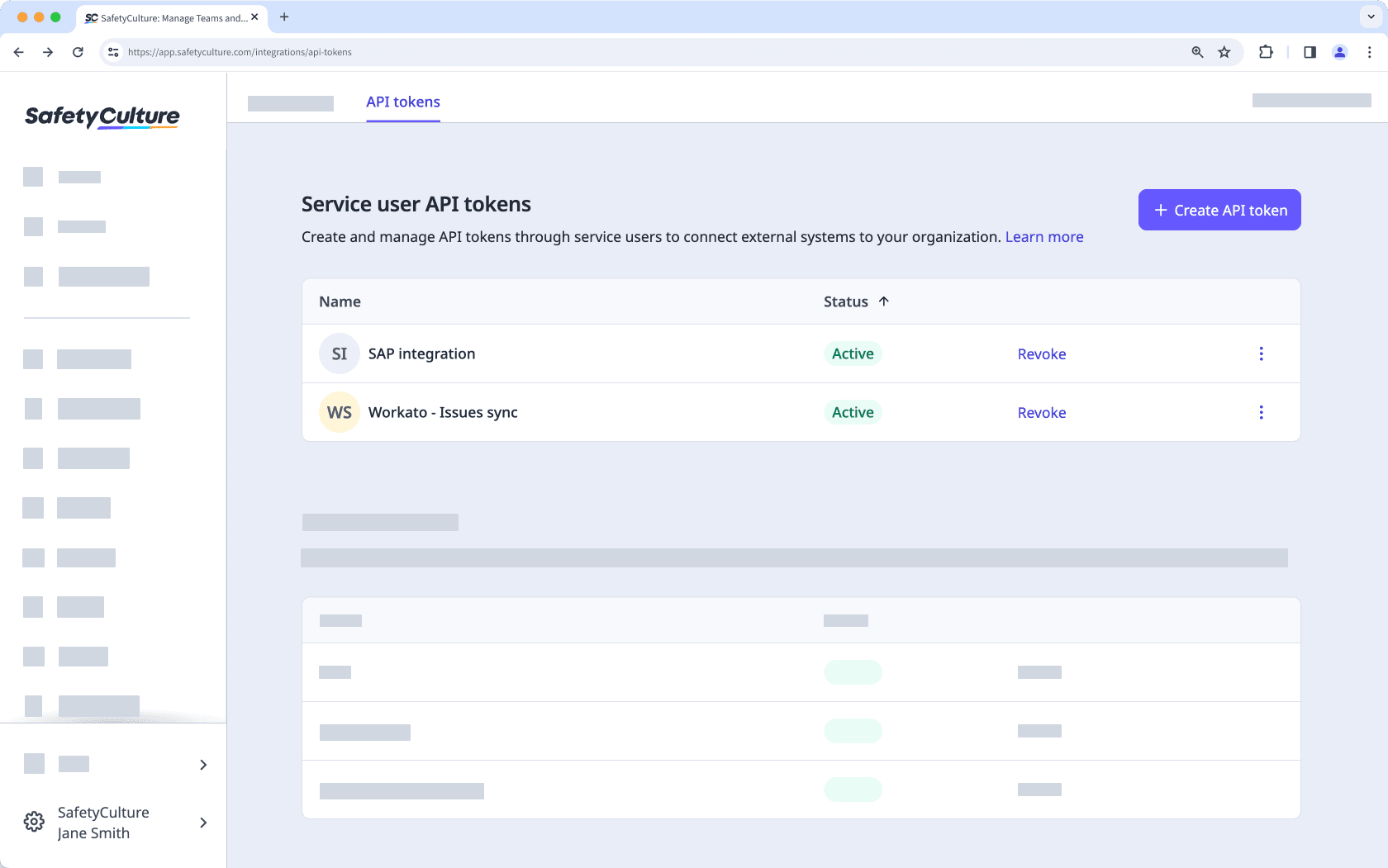
Revocar un token de API de usuario de servicio
Haga clic en el nombre de su organización en la esquina inferior izquierda de la página y seleccione Integraciones.
Seleccione Tokens de API de la pestaña en la parte superior de la página.
En Tokens de API de usuarios de servicio, haga clic en Revocar junto al token.
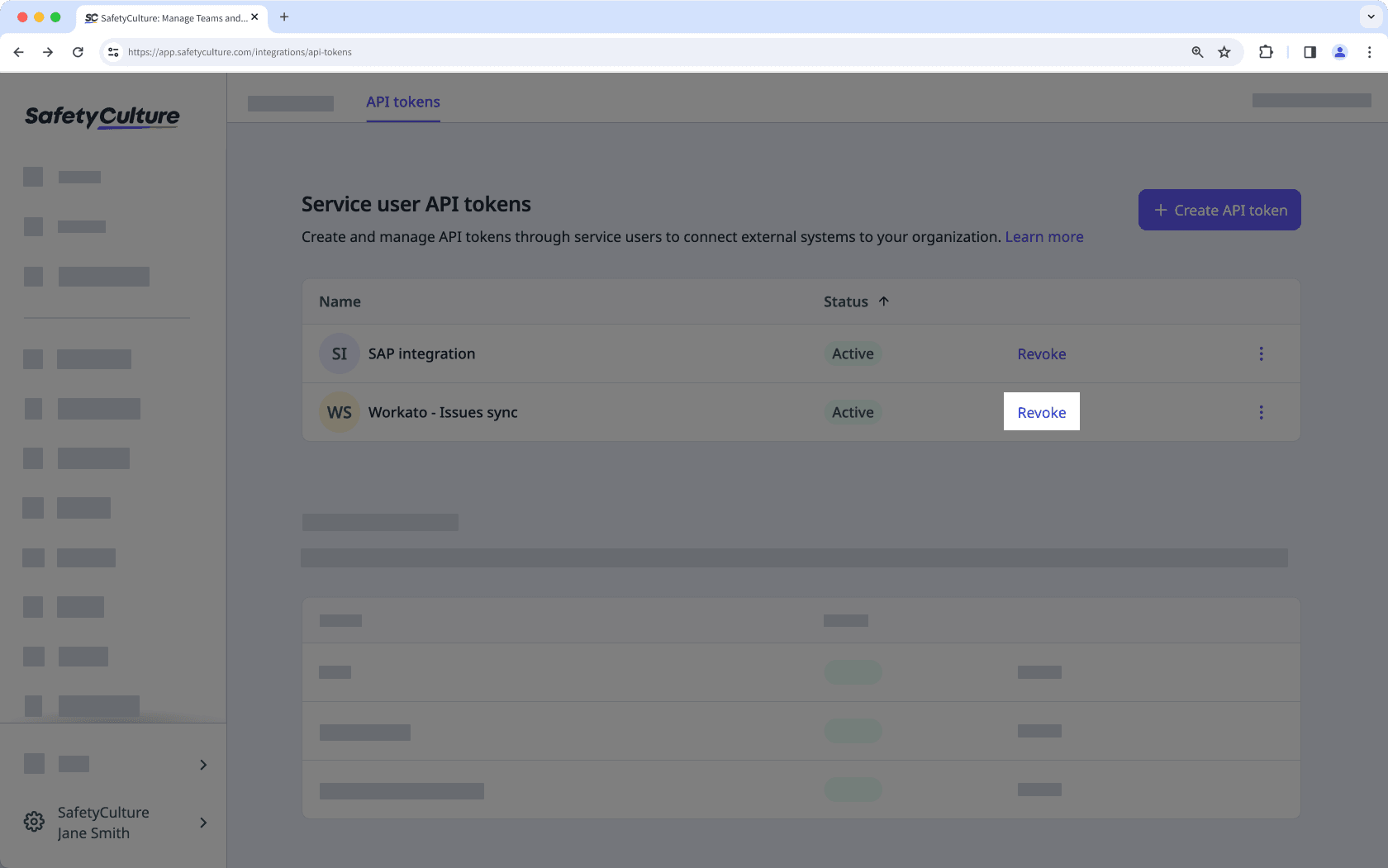
En la ventana emergente, haga clic en Revocar.
Regenerar un token de usuario de servicio revocado
Haga clic en el nombre de su organización en la esquina inferior izquierda de la página y seleccione Integraciones.
Seleccione Tokens de API de la pestaña en la parte superior de la página.
En la sección Tokens de API de usuarios de servicio, haga clic en Regenerar junto al token revocado.
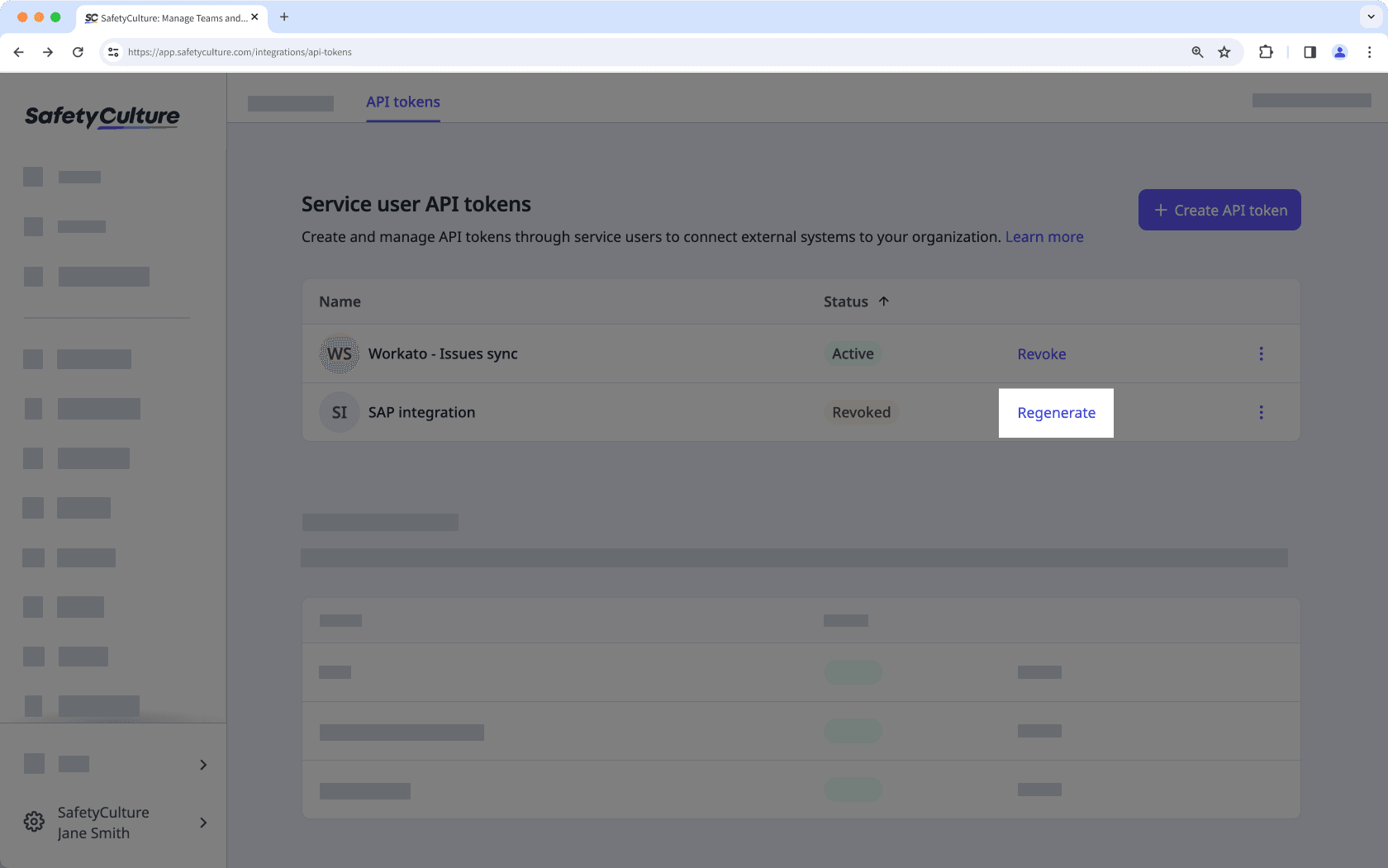
En la ventana emergente, haga clic en Confirmar.
Haga clic en el token de API del usuario de servicio para copiarlo. Guárdelo de forma segura antes de cerrar la ventana.
Eliminar un token de usuario de servicio revocado
Haga clic en el nombre de su organización en la esquina inferior izquierda de la página y seleccione Integraciones.
Seleccione Tokens de API de la pestaña en la parte superior de la página.
Haga clic en
junto al token de API revocado.
Seleccione
Eliminar.
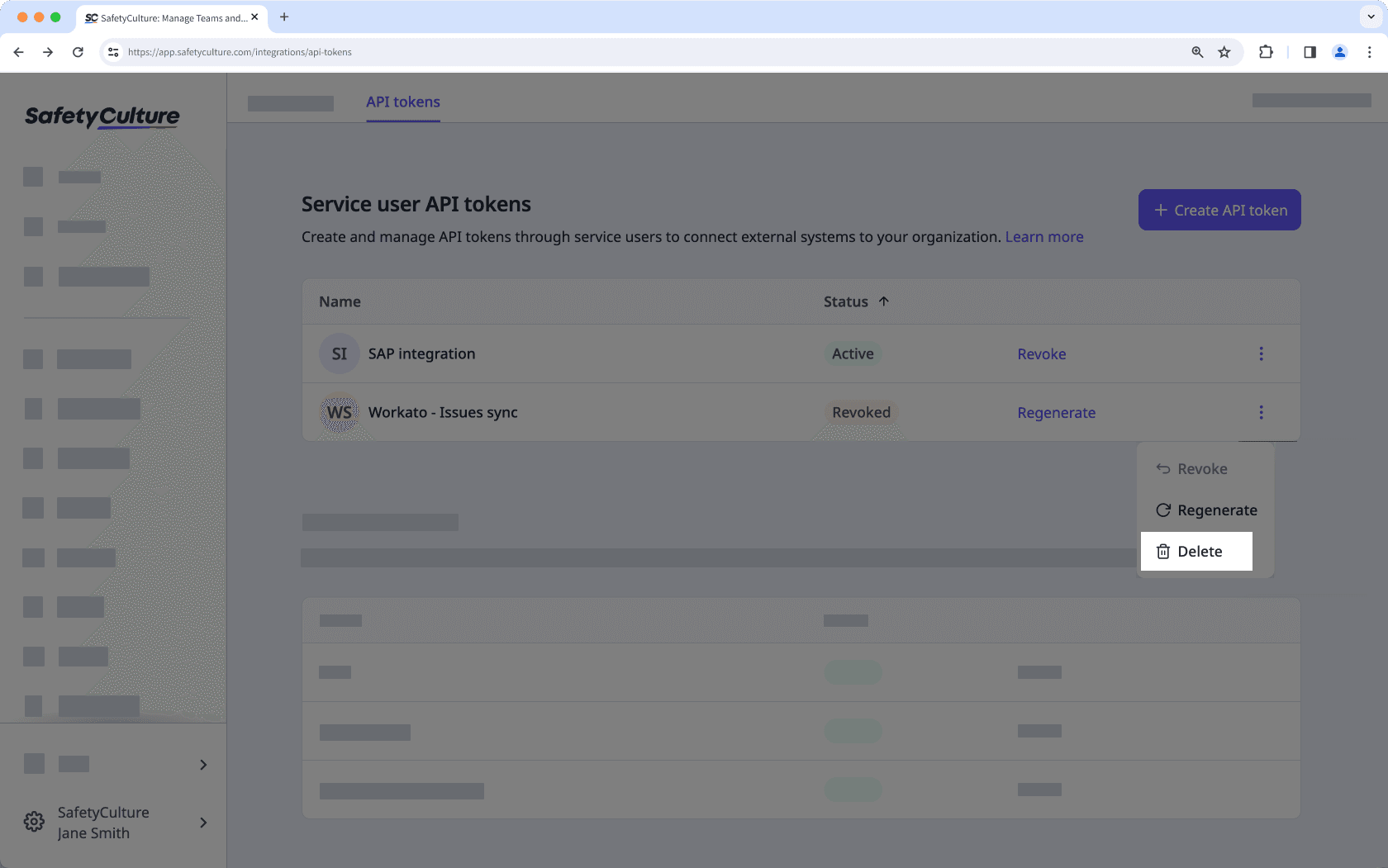
En la ventana emergente, haga clic en Eliminar.
Preguntas frecuentes
Depende de cómo esté configurada la integración.
Para integraciones personalizadas (como Workato, scripts o llamadas directas a la API mediante un usuario de servicio o un token de API de usuario): sí. Regenerar el token interrumpirá la integración hasta que actualice manualmente el token de sustitución en los ajustes de la integración.
Para integraciones nativas de SafetyCulture (como Power BI, Microsoft Teams o SharePoint): no. Estas integraciones utilizan tokens gestionados por el sistema, por lo que revocar o regenerar sus tokens de API no les afectará.
Revocar un token de API de un usuario de servicio impide su uso de forma inmediata, aunque podrá volver a generarlo más adelante. Esto resulta útil si desea pausar temporalmente una integración sin eliminar el token por completo.
La eliminación de un token de API de un usuario de servicio lo elimina de forma permanente de su organización. Solo puede eliminar un token después de haberlo revocado. Una vez eliminado, no se puede recuperar ni regenerar, por lo que será necesario crear uno nuevo si desea restablecer la integración.
¿Esta página le fue de ayuda?
Gracias por hacérnoslo saber.